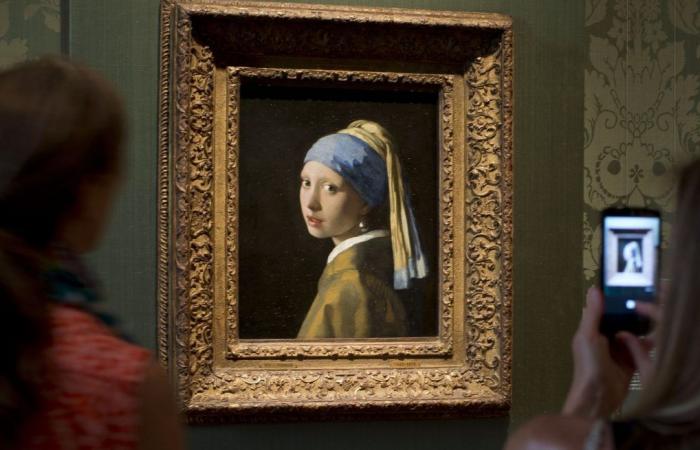Scientists believe they have unlocked the secret behind the fame of The girl with the pearl earring by the painter Johannes Vermeer, after measuring the effect of the work on the brains of those who contemplate it.
The Mauritshuis Museum in The Hague, which houses the world-famous work, asked neuroscientists to measure the brain activity of spectators observing the portrait as well as other works on display at the establishment.
They concluded that the viewer gets caught in what they call a “sustained attention loop” (Sustained Attentional Loop), a neurological phenomenon which, according to scientists, would be specific to The girl with the pearl earring.
The viewer’s gaze is initially drawn to the young girl’s eye. It then moves toward her mouth, slides toward the pearl, and back up toward the eye — and so on.
This attention loop is why we linger on this painting longer than the others, explains Martin De Munnik, of the research company Neurensics which conducted the study.
“You’re obligated to pay attention whether you want to or not,” he added.
By measuring participants’ brain activity, scientists also discovered strong stimulation of the precuneus, the part of the brain that governs consciousness and personal identity.
“We expected that The young girl be special. But the “why” also surprised us,” said De Munnik.
“Why do you know this painting and not the others? Thanks to this je ne sais quoi.”
According to him, this is the first study of its type to use electroencephalogram (EEG) and MRI technologies to measure a neurological reaction to a work of art.
The brain doesn’t lie
The scientists also compared the brain’s reaction when the viewer looks at the original painting in the museum and when looking at a reproduction.
They also found that the emotion felt by the viewer was ten times stronger than for a poster.
To carry out their study, the scientists attached an eye sensor and electrodes around the heads of each of the 10 participants in order to monitor their brain activity when faced with original paintings and reproductions.
Martine Gosselink, director of the Mauritshuis, believes that these discoveries underline the importance of going to the museum to see original works.
“It’s very important to be interested in art, whether it’s photography, dance or works from the Dutch Golden Age,” she said in an interview with the AFP.
“The brain doesn’t lie,” she added.
In his works, Vermeer often draws attention to a specific point, painting the surrounding details in a blurred manner, explains Mme Gosselink.
However, The girl with the pearl earring has three points of focus: the eye, the mouth and the pearl. According to the museum director, this sets it apart from other Vermeer paintings.
“Here we see someone really looking at you, whereas in every other Vermeer painting you see someone writing or doing needlework,” she said.
Mr De Munnik said it would be interesting to carry out similar studies on other famous paintings, such as The Mona Lisa by Leonardo Da Vinci.
“People sometimes call [La jeune fille à la perle] the Mona Lisa of the North, but I think times are changing, so maybe The Mona Lisa became the Young girle from the South,” jokes Mme Gosselink.






